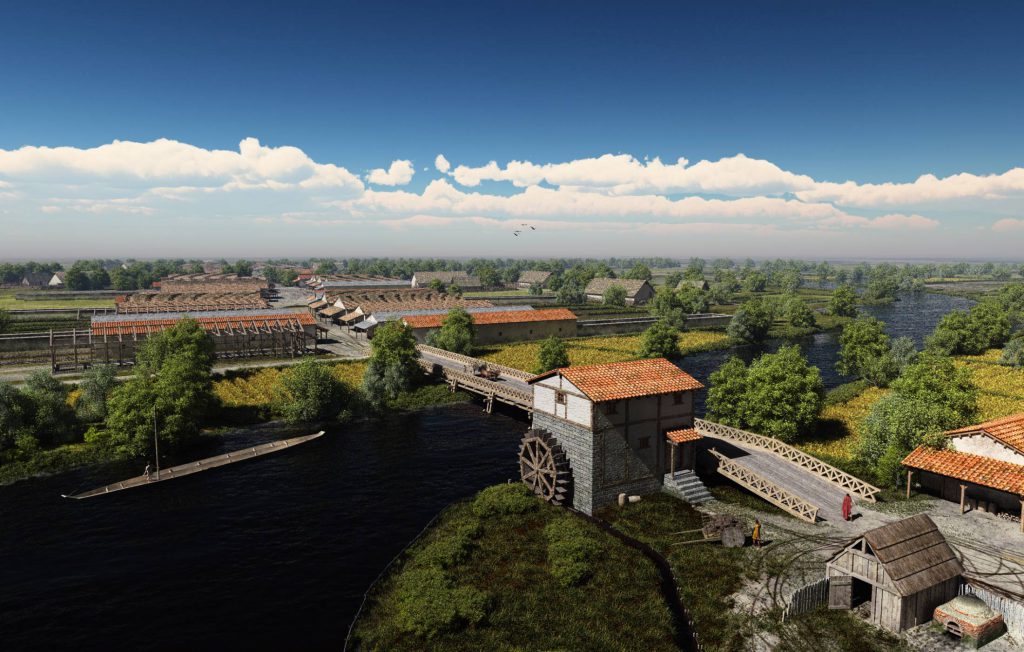Roman watermills
Vitruvius already recognized the power of water.
The Oude Molen (the mill of the Houben family) is an 18th-century watermill. Using water power, grain was ground into flour here—a tradition that goes back to Roman times.
Apart from human and animal muscle power, water and wind were the only sources of energy in the Roman era. The Romans used wind power only for navigation. Water power, however, was employed to drive mills and to lift water for irrigating fields or supplying aqueducts.
The Roman architect Vitruvius described the principle of watermills as early as the first century BC in his book De Architectura. It is even possible that Roman mills once stood here on the Eyserbeek. But we do not know for certain, since no archaeological evidence has yet been found.
One of the most impressive examples of the use of water power is the mill complex of Barbegal near Arles in France. Eight mills were powered by water brought in through aqueducts. And a relief on a sarcophagus from Hierapolis in Turkey shows that by the third century AD, a water-powered stone saw had been developed.
Large-scale, industrial applications of wind and water power were unknown in Roman times. After all, there were enough slaves available…
